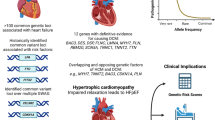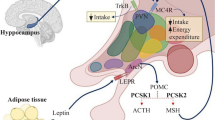Abstract
Type 2 diabetes is becoming epidemic. The personal and social burden imposed by diabetes will increase in the close future as its prevalence is expected to double in the next 15–20 years. Type 2 diabetes is caused by the combination of resistance to insulin action and inadequate insulin secretion. Despite the role of profound changes in individual environmental exposure is incontrovertible, several findings clearly indicate that type 2 diabetes and insulin resistance are also heritable. Among the several inhibitors of insulin signalling, which have been recently proposed as determinants of insulin resistance, is TRIB3, a mammalian tribbles homolog which affects insulin signalling at the level of Akt-2, a key modulator of insulin action in target cells. We here report data on a prevalent Q84R TRIB3 missense single nucleotide polymorphism (rs2295490) we first described few years ago. Several lines of evidences indicate that this amino-acid change is, in fact, a gain of function mutation with the potential to affect insulin signalling and thus, to increase the risk of insulin resistance and related clinical outcomes.


Similar content being viewed by others
References
Hogan P, Dall T, Nikolov P, American Diabetes Association (2003) Economic costs of diabetes in the US in 2002. Diabetes Care 26:917–932
Krolewski AS, Warram JH (2005) Epidemiology of late complications of diabetes: a basis for the development and evaluation of preventive program. In: Joslin’s diabetes mellitus. Lippincott, New York
Cowie CC, Rust KF, Byrd-Holt DD et al (2006) Prevalence of diabetes and impaired fasting glucose in adults in the US population: National Health And Nutrition Examination Survey 1999–2002. Diabetes Care 29:1263–1268
Stumvoll M, Goldstein BJ, van Haeften TW (2005) Type 2 diabetes: principles of pathogenesis and therapy. Lancet 365:1333–1346
Poulsen P, Kyvik KO, Vaag A et al (1999) Heritability of type II (non-insulin-dependent) diabetes mellitus and abnormal glucose tolerance—a population-based twin study. Diabetologia 42:139–145
Doria A, Patti ME, Kahn CR (2008) The emerging genetic architecture of type 2 diabetes. Cell Metab 8:186–200
Reaven GM (1988) Banting lecture 1988. Role of insulin resistance in human disease. Diabetes 37:1595–1607
Kahn CR (1994) Banting lecture. Insulin action, diabetogenes, and the cause of type II diabetes. Diabetes 43:1066–1084
Martin BC, Warram JH, Krolewski AS et al (1992) Role of glucose and insulin resistance in development of type 2 diabetes mellitus: results of a 25-year follow-up study. Lancet 340:925–929
Lyssenko V, Almgren P, Anevski D et al (2005) Predictors of and longitudinal changes in insulin sensitivity and secretion preceding onset of type 2 diabetes. Diabetes 54(1):166–174
Bergman RN (2007) Orchestration of glucose homeostasis: from a small acorn to the California oak. Diabetes 56:1489–1501
Yeni-Komshian H, Carantoni M, Abbasi F et al (2000) Relationship between several surrogate estimates of insulin resistance and quantification of insulin-mediated glucose disposal in 490 healthy nondiabetic volunteers. Diabetes Care 23:171–175
Bogardus C, Lillioja S, Mott DM et al (1985) Relationship between degree of obesity and in vivo insulin action in man. Am J Physiol 248:E286–E291
Lillioja S, Mott DM, Zawadzki JK et al (1987) In vivo insulin action is familial characteristic in nondiabetic Pima Indians. Diabetes 36:1329–1335
Panhuysen CI, Cupples LA, Wilson PW et al (2003) A genome scan for loci linked to quantitative insulin traits in persons without diabetes: the Framingham Offspring Study. Diabetologia 46:579–587
Altshuler D, Hirschhorn JN, Klannemark M et al (2000) The common PPARgamma Pro12Ala polymorphism is associated with decreased risk of type 2 diabetes. Nat Genet 26:76–80
Ludovico O, Pellegrini F, Di Paola R et al (2007) Heterogeneous effect of peroxisome proliferator-activated receptor gamma2 Ala12 variant on type 2 diabetes risk. Obesity (Silver Spring) 15:1076–1081
Jellema A, Zeegers MP, Feskens EJ et al (2003) Gly972Arg variant in the insulin receptor substrate-1 gene and association with type 2 diabetes: a meta-analysis of 27 studies. Diabetologia 46:990–995
McAteer JB, Prudente S, Bacci S et al (2008) The ENPP1 K121Q polymorphism is associated with type 2 diabetes in European populations: evidence from an updated meta-analysis in 42,042 subjects. Diabetes 57:1125–1130
Florez JC (2008) Newly identified loci highlight beta cell dysfunction as a key cause of type 2 diabetes: where are the insulin resistance genes? Diabetologia 51:1100–1110
Cauchi S, Meyre D, Durand E et al (2008) Genome-wide association studies of novel genes associated with type 2 diabetes show gene–gene interaction and high predictive value. PLoS ONE 3:e2031
Saltiel AR (2003) Putting the brakes on insulin signalling. N Engl J Med 349:2560–2562
Bacci S, De Cosmo S, Prudente S et al (2007) ENPP1 gene, insulin resistance and related clinical outcomes. Curr Opin Clin Nutr Metab Care 10:403–409
Du K, Herzig S, Kulkarni RN et al (2003) TRB3: a tribbles homolog that inhibits Akt/PKB activation by insulin in liver. Science 300:1574–1577
Prudente S, Hribal ML, Flex E et al (2005) The functional Q84R polymorphism of mammalian Tribbles homolog TRB3 is associated with insulin resistance and related cardiovascular risk in Caucasians from Italy. Diabetes 54:2807–2811
Lawlor MA, Alessi DR (2001) PKB/Akt: a key mediator of cell proliferation, survival and insulin responses? J Cell Sci 114:2903–2910
Krook A, Roth RA, Jiang XJ et al (1998) Insulin stimulated Akt kinase activity is reduced in skeletal muscle from NIDDM subjects. Diabetes 47:1281–1286
Cho H, Mu J, Kim JK et al (2001) Insulin resistance and a diabetes mellitus-like syndrome in mice lacking the protein kinase Akt2 (PKB-beta). Science 292:1728–1731
Koo SH, Satoh H, Herzig S et al (2004) PGC-1 promotes insulin resistance in liver through PPAR-alpha-dependent induction of TRB-3. Nat Med 10:530–534
Iynedjian PB (2005) Lack of evidence for a role of TRB3/NIPK as an inhibitor of PKB-mediated insulin signalling in primary hepatocytes. Biochem J 386:113–118
He L, Simmen FA, Mehendale HM et al (2006) Chronic ethanol intake impairs insulin signalling in rats by disrupting Akt association with the cell membrane: role of TRB3 in inhibition of Akt/protein kinase B activation. J Biol Chem 281:11126–11134
Takahashi Y, Ohoka N, Hayashi H et al (2008) TRB3 suppresses adipocyte differentiation by negatively regulating PPAR-γ transcriptional activity. J Lipid Res 49:880–892
Ghosh S, Watanabe RM, Valle TT et al (2000) The Finland-United States investigation of non-insulin dependent diabetes mellitus genetics (FUSION) study I: an autosomal genome scan for genes that predispose to type 2 diabetes. Am J Hum Genet 67:1174–1185
Permutt MA, Wasson JC, Suarez BK et al (2001) A genome scan for type 2 diabetes susceptibility loci in a genetically isolated population. Diabetes 50:681–685
Andreozzi F, Formoso G, Prudente S et al (2008) TRIB3 R84 variant is associated with impaired insulin-mediated nitric oxide production in human endothelial cells. Arterioscler Thromb Vasc Biol 28:1355–1360
De Cosmo S, Prudente S, Andreozzi F et al (2007) Glutamine to arginine substitution at amino acid 84 of mammalian tribbles homolog TRIB3 and CKD in whites with type 2 diabetes. Am J Kidney Dis 50:688–689
Prudente S, Scarpelli D, Chandalia M et al (2008) The TRIB3 Q84R polymorphism and risk of early-onset type 2 diabetes. J Clin Endocrinol Metab [Epub ahead of print]
Zeggini E, Scott LJ, Saxena R et al (2008) Meta-analysis of genome-wide association data and large-scale replication identifies additional susceptibility loci for type 2 diabetes. Nat Genet 40:638–645
Weijnen CF, Rich SS, Meigs JB et al (2002) Risk of diabetes in siblings of index cases with type 2 diabetes: implications for genetic studies. Diabet Med 19:41–50
Mitchell BD, Kammerer CM, Reinhart LJ et al (1994) NIDDM in Mexican-American families. Heterogeneity by age of onset. Diabetes Care 17:567–573
Frayling TM, Wiltshire S, Hitman GA et al (2003) Young-onset type 2 diabetes families are the major contributors to genetic loci in the Diabetes UK Warren 2 genome scan and identify putative novel loci on chromosomes 8q21, 21q22, and 22q11. Diabetes 52:1857–1863
Marchetti P, Lupi R, Federici M et al (2002) Insulin secretory function is impaired in isolated human islets carrying the Gly(972)→Arg IRS–1 polymorphism. Diabetes 51:1419–1424
Clausen JO, Hansen T, Bjorbaek C et al (1995) Insulin resistance: interactions between obesity and a common variant of insulin receptor substrate-1. Lancet 346:397–402
Almind K, Inoue G, Pedersen O et al (1996) A common amino acid polymorphism in insulin receptor substrate-1 causes impaired insulin signalling. Evidence from transfection studies. J Clin Invest 11:2569–2575
Stumvoll M, Fritsche A, Volk A et al (2001) The Gly972Arg polymorphism in the insulin receptor substrate-1 gene contributes to the variation in insulin secretion in normal glucose-tolerant humans. Diabetes 50:882–885
Marini MA, Frontoni S, Mineo D et al (2003) The Arg972 variant in insulin receptor substrate-1 is associated with an atherogenic profile in offspring of type 2 diabetic patients. J Clin Endocrinol Metab 88:3368–3371
Baratta R, Rossetti P, Prudente S et al (2008) Role of the ENPP1 K121Q polymorphism on glucose homeostasis. Diabetes 57:3360–3364
Bacci S, De Cosmo S, Prudente S, Trischitta V (2007) ENPP1 gene, insulin resistance and related clinical outcomes. Curr Opin Clin Nutr Metab Care 4:403–409
Goldfine ID, Maddux BA, Youngren JF et al (2008) The role of membrane glycoprotein plasma cell antigen 1/ectonucleotide pyrophosphatase phosphodiesterase 1 in the pathogenesis of insulin resistance and related abnormalities. Endocr Rev 29:62–75
McAteer JB, Prudente S, Bacci S et al (2008) The ENPP1 K121Q polymorphism is associated with type 2 diabetes in European populations: evidence from an updated meta-analysis in 42,042 subjects. Diabetes 4:1125–1130
Biddinger SB, Kahn CR (2006) From mice to men: insights into the insulin resistance syndromes. Annu Rev Physiol 68:123–158
Kulkarni RN, Brüning JC, Winnay JN et al (1999) Tissue-specific knockout of the insulin receptor in pancreatic beta cells creates an insulin secretory defect similar to that in type 2 diabetes. Cell 96:329–339
Aspinwall CA, Qian WJ, Roper MG et al (2000) Roles of insulin receptor substrate-1, phosphatidylinositol 3-kinase, and release of intracellular Ca2+ stores in insulin-stimulated insulin secretion in β-cells. J Biol Chem 21:22331–22338
Bernal-Mizrachi E, Fatrai S, Johnson JD et al (2004) Defective insulin secretion and increased susceptibility to experimental diabetes are induced by reduced Akt activity in pancreatic islet β cells. J Clin Invest 114:928–936
Acknowledgments
This work was partly supported by Italian Ministry of Health (Ricerca Corrente 2006 and 2008 to S.P.).
Author information
Authors and Affiliations
Corresponding author
Rights and permissions
About this article
Cite this article
Prudente, S., Morini, E. & Trischitta, V. The emerging role of TRIB3 as a gene affecting human insulin resistance and related clinical outcomes. Acta Diabetol 46, 79–84 (2009). https://doi.org/10.1007/s00592-008-0087-y
Received:
Accepted:
Published:
Issue Date:
DOI: https://doi.org/10.1007/s00592-008-0087-y




